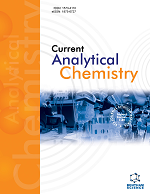
Full text loading...

This study describes the development of methodologies for the isolation, identification, and quantification of betulinic, oleanolic, and ursolic acids in extracts from Eriope blanchetii (Lamiaceae) and Davilla rugosa (Dilleniaceae).
Betulinic, oleanolic, and ursolic acids are compounds with biological activities and commercial and technological uses. Developing methodologies for their separation from natural sources are relevant once their synthesis is not easy.
Development of conventional methodology for quantifying and isolating pure betulinic acid in chloroform extracts of D. rugosa stems and developing methods for obtaining and quantifying oleanolic, ursolic, and betulinic acids from organic extracts.
A complete validation “in-house” for the chromatographic method was performed, and different techniques of extraction – maceration under heating vs. microwave-assisted extraction (MAE) conditions were compared. Davilla rugosa stems were employed as the source of pure betulinic acid, and this compound was obtained in a reasonable yield (~ 2.4 x 10-2% dry weight).
Chromatographic analysis of the E. blanchetii extracts indicates betulinic acid occurs in higher concentrations in the leaves (5.53% dry weight), followed by lower concentrations in other plant parts, together with two other triterpene acids. HPLC analysis of extracts obtained by MAE extractions and maceration of E. blanchetti indicated that MAE is more efficient than maceration under heating in relative yield. The HPLC-validated method was rightly selective and accurate, presenting good linearity (R2 = 0.9993), robustness, and recovery rate values with acceptable limits (LD = 5.9914; LQ = 18.1557; µg mL-1).
MAE was the most efficient methodology than maceration under similar conditions. Furthermore, different parts of E. blanchetii and D. rugosa are affordable sources of bioactive betulinic acid.